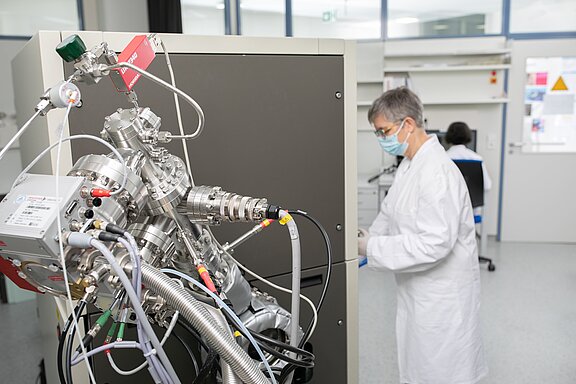
Cleanliness Standards
Cleanliness plays a major role in the final cleaning of medical devices because the surface interacts with the biology of the body. But how clean does the surface have to be? In a joint project, so-called standard surfaces were developed, with the help of which surfaces can be objectively evaluated with regard to their cleanliness.
The main objective of the joint project was to develop a basis for an objective and thus reliable assessment of the cleaning condition of implant surfaces after final cleaning in production, since neither norms nor established standards are available for an objective assessment of the cleanliness of surfaces. In many cases, therefore, the characterization of the cleaned surface, in addition to a purely visual inspection, is limited to the indication of a total carbon concentration (TOC) obtained via an eluate from the implant surface. However, this extractive procedure only shows what is detached from the surface and not what remains on the surface.
No surface is atomically clean. A first step in evaluating cleanliness was therefore to determine how implant surfaces are composed that have come into contact with auxiliary materials from manufacturing and have subsequently been cleaned according to the recognized state of the art. The results from the present investigations were used as a basis for the introduction of XPS standard surfaces. This provides an analytical tool for qualifying the chemical cleanliness of implant surfaces that includes all elements and chemical compounds in the investigations. Direct examination of the implant surface reveals the actual chemical composition of the surface and thus avoids the uncertainty of all elution methods, namely possible incomplete detachment and, consequently, incomplete analysis of the contaminants. In addition to the measurement of the chemical compounds on the surface, an objective evaluation of the chemical cleanliness is possible due to the quantifiability with XPS.
With photoelectron spectroscopy (XPS or ESCA) in combination with scanning electron microscopy (SEM), analytical procedures are available at the NMI to evaluate the cleanliness of implant surfaces both qualitatively complete (all elements and compounds) and quantitatively and thus objectively. Since the examinations at the NMI are carried out using accredited procedures, the results can be fed into the relevant quality management systems and used for the certification of the respective products. New standard surfaces have been developed on an ongoing basis.
Projects
- Final cleaning
- Cleanliness standards of coatings containing copper






